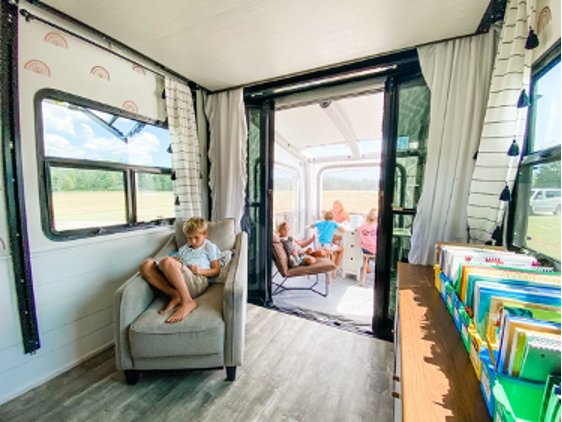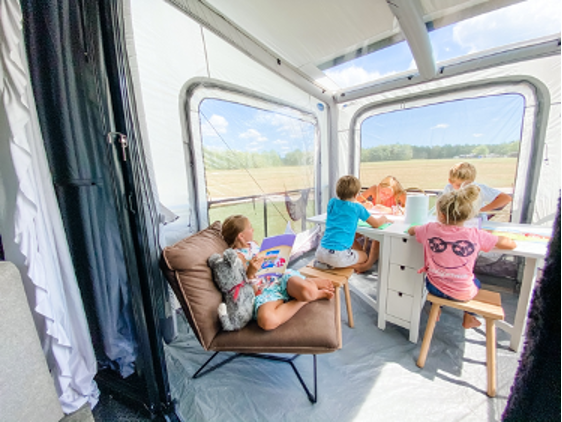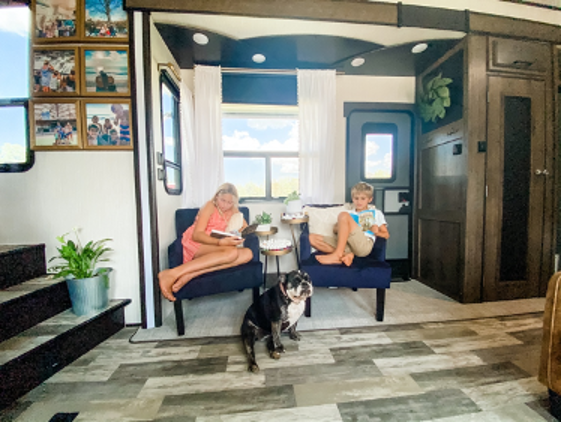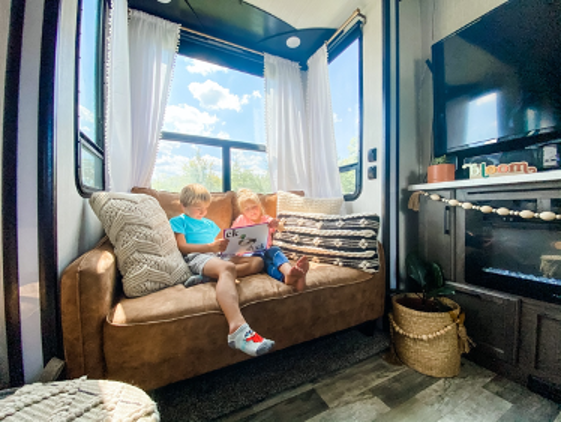Road Schooling: How the Proha Family Makes Experiential Homeschooling on the Road Possible
Our family is entering our third year of “roadschooling” and eighth year of homeschooling! Each year, we have explored a different learning style and curriculum. When we first started traveling in our 33-foot Heartland Mallard, we did not have the space to carry around a curriculum for five kids. We had been utilizing an online school through our public-school system, much like what I am sure a lot of you are currently doing and looking into.
The following year we chose to go completely online and use time4learning.com. The advantage of this type of curriculum is that the kids can do it quickly from day to day and don’t have to carry around any books which is ideal if you are tight on space.
We also loved this platform because we were frequently moving from location to location and the kids could easily do their schoolwork in the car on long drives! The biggest disadvantage however is that you will want to incorporate some sort of supplemental schooling material(s) as we didn’t feel our kids were receiving enough writing and reading curriculum.
This year, since we have the new Cyclone 4006, and have lots of space with our toy hauler patio that we utilize as a school room, we are doing a combined school program from Abeka. The kids will be taught online from a teacher and will complete book work as well!
Our daily schedule
Our roadschooling schedule will likely look like a typical schedule of those who are going to a brick and mortar school:
- Wake up and eat breakfast
- Begin school – this could be multiple subjects per day such as science, math and language arts but it will depend on the curriculum as some only focus on math and language arts
- Finish school around lunch time
We usually set up three kids in the back-patio room (featuring MORryde Air Room) and then two will be in the main area of the RV working on TV trays.
One thing with homeschooling or roadschooling is that you must learn how to adapt. Not all weeks will look the same and that’s okay.
Hands-on learning
Our family loves to visit museums and explore the history of the new area we are in, so this gives us the opportunity to engage in hands-on learning for the different lessons. For example, for a history lesson on any given week, we will explore the town nearby and its history instead of book work. We also might take nature walks for science as the trees, animals and plants will be different depending on what state you are in. There are a lot of fun programs to enroll your children in such as the Junior Ranger Program, museum passes and libraries!
Don’t be afraid to get creative with learning! We love the freedom of roadschooling for our family and our kids thrive in this type of learning environment. You are totally capable of this and your kids will thoroughly enjoy the hands-on learning!
Our family tends to stay at least two weeks at an RV park, unless we are doing a long cross-country trip, so we are excited to see how this new format of “road schooling” works for our family.
Follow the Proha Family on Instagram @oilsandgracetribe.









